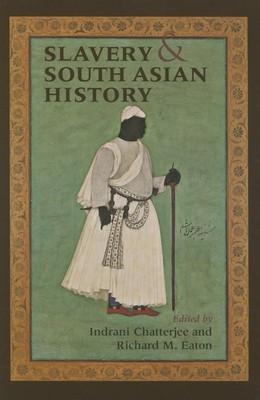
- We will send in 10–14 business days.
- Publisher: Indiana University Press
- ISBN-10: 025321873X
- ISBN-13: 9780253218735
- Format: 15.6 x 23.7 x 2 cm, softcover
- Language: English
- SAVE -10% with code: EXTRA
Slavery & South Asian History (e-book) (used book) | bookbook.eu
Reviews
Description
"[W]ill be welcomed by students of comparative slavery. . . . [It] makes us reconsider the significance of slavery in the subcontinent." --Edward A. Alpers, UCLA
Despite its pervasive presence in the South Asian past, slavery is largely overlooked in the region's historiography, in part because the forms of bondage in question did not always fit models based on plantation slavery in the Atlantic world. This important volume will contribute to a rethinking of slavery in world history, and even the category of slavery itself. Most slaves in South Asia were not agricultural laborers, but military or domestic workers, and the latter were overwhelmingly women and children. Individuals might become slaves at birth or through capture, sale by relatives, indenture, or as a result of accusations of criminality or inappropriate sexual behavior. For centuries, trade in slaves linked South Asia with Africa, the Middle East, and Central Asia. The contributors to this collection of original essays describe a wide range of sites and contexts covering more than a thousand years, foregrounding the life stories of individual slaves wherever possible.
Contributors are Daud Ali, Indrani Chatterjee, Richard M. Eaton, Michael H. Fisher, Sumit Guha, Peter Jackson, Sunil Kumar, Avril A. Powell, Ramya Sreenivasan, Sylvia Vatuk, and Timothy Walker.
EXTRA 10 % discount with code: EXTRA
The promotion ends in 20d.17:26:34
The discount code is valid when purchasing from 10 €. Discounts do not stack.
- Publisher: Indiana University Press
- ISBN-10: 025321873X
- ISBN-13: 9780253218735
- Format: 15.6 x 23.7 x 2 cm, softcover
- Language: English English
"[W]ill be welcomed by students of comparative slavery. . . . [It] makes us reconsider the significance of slavery in the subcontinent." --Edward A. Alpers, UCLA
Despite its pervasive presence in the South Asian past, slavery is largely overlooked in the region's historiography, in part because the forms of bondage in question did not always fit models based on plantation slavery in the Atlantic world. This important volume will contribute to a rethinking of slavery in world history, and even the category of slavery itself. Most slaves in South Asia were not agricultural laborers, but military or domestic workers, and the latter were overwhelmingly women and children. Individuals might become slaves at birth or through capture, sale by relatives, indenture, or as a result of accusations of criminality or inappropriate sexual behavior. For centuries, trade in slaves linked South Asia with Africa, the Middle East, and Central Asia. The contributors to this collection of original essays describe a wide range of sites and contexts covering more than a thousand years, foregrounding the life stories of individual slaves wherever possible.
Contributors are Daud Ali, Indrani Chatterjee, Richard M. Eaton, Michael H. Fisher, Sumit Guha, Peter Jackson, Sunil Kumar, Avril A. Powell, Ramya Sreenivasan, Sylvia Vatuk, and Timothy Walker.


Reviews